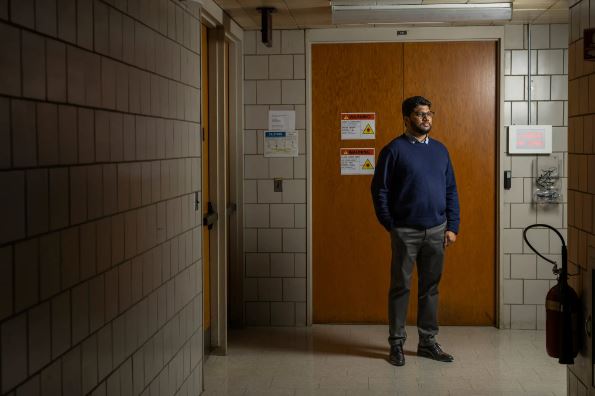In March, a group of eleven scientists disclosed their discovery of a superconductor that operates at ambient temperature to the journal Nature. At this time, eight of those researchers have requested that Nature withdraw the article.
That puts them in direct opposition to the study’s principal investigator, Professor Ranga P. Dias of the Departments of Mechanical Engineering and Physics at the University of Rochester in New York. Dr. Dias has been at the centre of multiple charges of scientific misconduct in recent years, despite making a number of astounding scientific claims in that time.
Dr. Dias and Unearthly Materials, the firm he formed to commercialise his superconducting discoveries, may come under even more scrutiny as a result of the retraction request. Investors have given $16.5 million to Unearthly Materials.
Since superconductors have zero electrical resistance, they have potential applications in power transmission, high-intensity magnets (such as those found in MRI equipment and future fusion reactors), and more. All known superconductors need extreme cold to function.
Dr. Dias and colleagues explained in a report published in Nature how adding a trace amount of nitrogen to the silvery-white metal lutetium changed its electrical characteristics. At 145,000 psi, the material changed colour from blue to red (hence the name “redmatter” coined by Dr. Dias), and it became a superconductor, able to easily carry electricity at temperatures as warm as 70 degrees Fahrenheit, as reported by the researchers in the Nature paper.
Recent graduates from Dr. Dias’s lab made up five of the letter’s authors. They claimed that they had voiced reservations during the writing of the research report. The authors noted “clearly misleading and/or inaccurate representations” in the original paper as one source of such worries.
According to the letter, the graduate students felt silenced since they were financially and academically dependent on Dr. Dias.
Ashkan Salamat, a physics professor at the University of Nevada, Las Vegas and the current president and CEO of Unearthly Materials, was one of the signatories of the letter requesting a retraction. In May, when other scientists voiced their concerns, Drs. Salamat and Dias defended the research.
When asked for remark, Dr. Salamat remained silent. Dr. Dias’s spokeswoman confirmed that Dr. Salamat was no longer working for Unearthly Materials but that he was still a stakeholder in the company.
Dr. Dias, a graduate student in his research group and a former undergraduate student who, according to his LinkedIn page, now works at Unearthly Materials, was the only author of the March study who did not sign the letter.
Dr. Dias asked the letter’s writers to rethink sending it before it was sent. In a letter released online by scientific writer Dan Garisto, he wrote, “I am obligated to defend myself and notify you of my request that you cease and desist from signing and/or sending the proposed letter.” A representative for Dr. Dias corroborated the letter’s claims.
However, Nature did receive the request to withdraw. In an email, Dr. Rödel reportedly said, “We are in absolute agreement with your request that the paper be retracted.”
“We are currently carefully investigating concerns related to the reliability of the data in this paper,” Karl Ziemelis, Nature’s chief physical sciences editor, said in a statement. Furthermore, we can confirm that we have been in touch with the writers about all of their issues.
Different material superconducting at ambient temperatures, but only under crushing pressures equivalent to those encountered towards the centre of the Earth, was reported by Dr. Dias and colleagues in a research also published in Nature in 2020.
Some experts questioned the findings in the 2020 publication, therefore Nature withdrew it in September 2022 after conducting a review, much to Dr. Dias’ and the other authors’ dismay.
Another of Dr. Dias’s studies, published in 2021, was removed from Physical Review Letters in August; it reported electronic transitions in manganese sulphide when the pressure was varied. Once again, sceptics raised concerns about questionable data, and this time, external reviewers confirmed what the journal’s editors had suspected.
“The findings back up the allegations of data fabrication/falsification convincingly,” the editors stated in a July email to the authors of the study. The retraction of the manganese sulphide study was approved by 9 of the 10 authors. Dr. Dias was the lone dissenter, maintaining that no falsification or manipulation had been included in the paper.
Several of the figures in the publication had issues with either the data or the methodology, as detailed in the co-authors’ letter. The letter also revealed that virtually all of the lutetium hydride samples weren’t manufactured in Dr. Dias’s lab following the technique detailed in the Nature study, but rather were purchased commercially and occurred to include some nitrogen impurities.
After approaching Dr. Dias with their concerns in April 2022, the graduate students were given the option of having their names removed as authors or allowing the work to continue forward.

